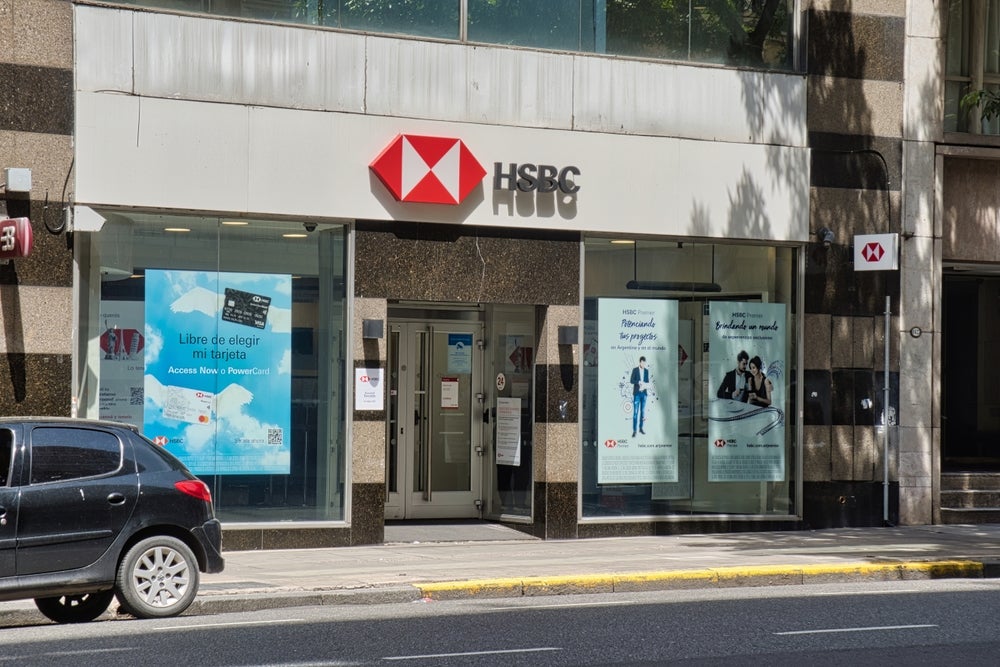strong annual results from Standard Chartered. Despite group profit
up 19 percent, the UK-headquartered but Asia-focused banking group
saw its global consumer banking earnings fall 33 percent, with Hong
Kong underperforming in particular. If 2007 was the year of HSBC, then 2008 may have
been the year of Standard Chartered (StanChart), given the
remarkable resilience of the Asia-focused bank’s full-year results.

StanChart saw pre-tax profit rise by 19
percent to $4.8 billion across the year; that may result in the
bank’s share price trading at a premium to its peers in much the
same way that HSBC’s did for the majority of last year (it is now
the second largest UK-listed bank by market capitalisation at £15
billion), but a closer look at StanChart’s results reveal many of
the same retail banking issues that characterised HSBC’s full-year
figures (see HSBC prepares for tougher 2009).
Pre-tax profit at StanChart’s consumer banking
division fell by 33 percent. As with HSBC, Hong Kong was a
particular weak spot, with consumer banking operating profit
falling by 32 percent to $445 million. The Americas, UK and Europe,
typically low-scale areas for the bank, also suffered: it recorded
a 2008 operating loss of $99 million versus a $41 million profit in
2007.
In spite of this, Standard Chartered has, like
HSBC, been a beneficiary of a “flight to quality”, particularly in
its largest markets. Overall deposits in Hong Kong rose by 31
percent to $64 billion in 2008, for instance.
The bank’s relative strength has also
presented it with other opportunities: speaking at an analyst
meeting following the publication of StanChart’s results, group
chief executive Peter Sands noted that the bank had been approached
on numerous occasions in 2008 regarding potential acquisitions.
How well do you really know your competitors?
Access the most comprehensive Company Profiles on the market, powered by GlobalData. Save hours of research. Gain competitive edge.

Thank you!
Your download email will arrive shortly
Not ready to buy yet? Download a free sample
We are confident about the unique quality of our Company Profiles. However, we want you to make the most beneficial decision for your business, so we offer a free sample that you can download by submitting the below form
By GlobalData“We had some very interesting, unexpected,
esoteric opportunities offered to us, many of which had very little
to do with Asia, Africa and the Middle East,” he said.
While StanChart says it will continue to
examine opportunities, chairman John Pearce added that the bank
“certainly [doesn’t] believe in just acquiring business for bulk,
or for widening our geographic footprint outside the territories we
already focus on”.
The bottom line
Unsurprisingly, it was the second
half of the year which most severely impacted StanChart’s retail
bottom line, with profits around 50 percent lower than in the first
six months of 2008. First half profits of $802 million compared
with the $314 million in profit made between July and December.
Performance in the opening months of
2009 slipped further. In a letter to investors, Sands described the
consumer bank as having a steady start to the year but added that
income was “running slightly, but not materially, below the average
run rate of the second half of 2008”.
To counter this shifting, volatile business
environment, StanChart is to “speed up” a comprehensive
restructuring of its retail and private banking division. Its
wealth management sub-unit slowed sharply in the second half
following the slump in Asian equity markets, and while overall
consumer banking profit dropped 33 percent, the division did
deliver a 3 percent growth in income.
The planned acceleration will come from what
Sands described as “a radical reshaping of the [retail] business”
currently being executed by Steve Bertamini, who became StanChart’s
chief executive of consumer banking in June 2008.
Across the business, Bertamini will be looking
to improve productivity and customer service through a series of
re-engineering projects, including call centre consolidation, and
by standardising system platforms, processes and products. The
focus is on segmentation and improving the bank’s cross-sell ratio,
which is well below many of its peers.
“On average each customer currently buys 1.4
products… We want to increase that. So we are tailoring products
for the needs of specific customer segments and focusing on pricing
based on our entire relationships with customers, rather than
simply on sales, and on how we manage those relationships,” Sands
stated, though he added: “The outlook for consumer banking depends
in part on the timing of the recovery in wealth management.”
The segmentation process has already begun in
some markets: in Malaysia, for instance, the focus is on insurance,
with StanChart looking to tap a perceived increase in demand for
such products amid heightened financial concerns from
consumers.
A strong performance in seven
markets
Most of Standard Chartered’s key
geographies delivered what the group said was a “strong
performance” in 2008, with seven of the nine geographic regions
recording income of over $1 billion in 2008. Singapore saw
operating profit before tax rise 67 percent, India by 37 percent,
Middle East and Other South Asia by 25 percent, South Korea by 10
percent and Africa by 5 percent.
In Africa, the bank’s continued inroads into
the continent’s underbanked populations are beginning to bear
fruit.
Particularly notable was Standard Chartered’s
performance in Nigeria, where a programme of branch investment
boosted income by 58 percent and liabilities by 41 percent, though
continued political fallout in Kenya meant profit in the bank’s
largest African market remained flat year-on-year.
The bank did launch an m-banking product in
Kenya in February in an effort to reach a market which has already
shown a strong desire for rival services such as M-Pesa, the P2P
money transfer offering provided by telecommunications firm
Safaricom that has attracted almost one in seven Kenyans (see case
study M-Pesa: Kenya’s revolutionary new bank).
The largest foreign bank in South
Korea
In South Korea, an economy more
severely hit than most in 2008, retail banking profit held up
relatively well, roughly flat year-on-year at $130 million, though
retail loan impairments rose by some 68 percent to $161 million at
StanChart’s SC First Bank.
The bank worked hard to consolidate its
position as the largest foreign financial institution in South
Korea in 2008, increasing marketing spend in the country and brand
awareness, launching a new mobile banking service and upgrading
more than 100 of SC First Bank’s 350-strong branch network.
The refurbishment is part of a $100 million
campaign to restructure the network, with around 90 percent of SC
First Bank branches due to be reconfigured or relocated over the
next three years. The success of SC First Bank’s ‘Do Dream’ savings
product, an easy-access, high-yield account, also bodes well for
future deposit gathering initiatives across the group: within four
months of launch, the bank amassed KRW1 trillion ($645 million) in
deposits.
Total profit of $358 million in Korea was a
“positive sign against difficult markets”, according to analysts at
Nomura who added the bank will need to repeat this kind of
performance across Asia in 2009 as the rest of the continent
succumbs to the spreading economic downturn.
98 percent of retail loans in
Asia
 StanChart continues to
StanChart continues to
believe its geographical positioning is the right one: with over 98
percent of its retail loan book in Asia, the bank will be
especially prone to the repercussions of a regional severe
slump.
Nevertheless, Sands said: “It’s important to
recognise that the fundamental attractions of Asia – young,
increasingly well-educated population, rapidly growing middle
class, urbanisation, industrialisation – these powerful drivers of
growth are still as present as they have ever been.”
He added that, in his opinion, the current
global economic crisis will hit the Asia-Pacific market less
severely than the Asian financial crisis of a decade ago. “One of
the reasons Asia will be resilient is because of the lessons
learned from the first Asia crisis”.
Figures from the bank’s economists show that
all of its geographic markets will either emerge from recession or
maintain positive growth rates in 2010, a forecast which may prove
to be on the optimistic side given that the Asian downturn has just
begun.
Loan impairment rates in Asia spiked sharply
in the second half of 2008, with Korea the most severely affected
but other key markets such as Hong Kong and Malaysia also saw an
uptick in delinquencies.
However, as Sands also noted, the structural
deleveraging taking place in Western economies was absent in Asia,
a legacy of lower rates of consumer debt which is helping limit
impairment rates in some cases.
In Singapore, loan impairments totalled just
$20 million in 2008, up from $15 million in 2007, with Sands
explaining that “a very substantial proportion of loans in the
consumer bank [in Singapore] are mortgages, and they have a
loan-to-value ratio of 48 percent. So where you’re seeing price
compression on Singapore we have a significant cushion to deal with
that.”
Ambitious plans for retail
banking
Despite the worsening economic
climate, StanChart has ambitious plans for its retail division as
it looks to bring performance up to speed with that seen in the
wholesale banking segment in 2008. Sands, group chief executive,
said: “We remain open for business and are supporting our clients
as they navigate this turmoil. We want to seize the opportunities
arising from this turbulence. We have a clear and consistent
strategy, and continue to invest for growth.”
Following the $2.7 billion rights issue last
December, the group’s Tier 1 capital ratio has improved to 10.1
percent while total capital stood at 15.6 percent, both above the
group’s target ranges. Improved deposit gathering led to the
asset-deposit ratio improving to 75 percent from 84 percent at the
half-year mark.
|
Geographic split |
|||
|
Standard Chartered – consumer |
|||
|
2008 |
2007 |
% change |
|
|
Hong Kong |
445 |
657 |
-32.3 |
|
Singapore |
309 |
265 |
16.6 |
|
Malaysia |
89 |
117 |
-23.9 |
|
Korea |
130 |
139 |
-6.47 |
|
Other Asia-Pacific |
-16 |
99 |
n/m |
|
India |
71 |
63 |
12.7 |
|
Middle East & Other |
112 |
227 |
-50.7 |
|
Africa |
75 |
69 |
8.7 |
|
Americas, UK and Europe |
-99 |
41 |
n/m |
|
Total |
1,116 |
1,677 |
-33.5 |
|
Source: Standard Chartered |
|||
|
Cross-sell |
||
|
Standard Chartered – cross-selling |
||
|
Customers without |
Customers without |
|
|
South Korea |
2.1m |
0.6m |
|
Taiwan |
1.4m |
0.3m |
|
India |
1m |
1.1m |
|
Hong Kong |
0.4m |
0.6m |
|
Total(2) |
5.8m |
4m |
|
(1) CASA=current and savings account; (2) |
||
|
Economic outlook |
|||
|
Standard Chartered GDP forecasts, |
|||
|
GDP (%) |
|||
|
Country/region |
2008 |
2009 |
2010 |
|
China |
9 |
6.8 |
8 |
|
India(1) |
6.3 |
5 |
6.8 |
|
Korea |
2.5 |
-2.5 |
2.6 |
|
Hong Kong |
2.5 |
-1.8 |
4 |
|
Singapore |
1.1 |
-3.9 |
3 |
|
Malaysia |
4.8 |
-0.8 |
2.8 |
|
Indonesia |
6.1 |
4 |
5.5 |
|
Vietnam |
6.2 |
4.2 |
5.5 |
|
Taiwan |
0.1 |
-1.5 |
3.2 |
|
Thailand |
3.1 |
0.5 |
1.9 |
|
Nigeria |
5.4 |
4.2 |
5.9 |
|
UAE |
4.8 |
0.5 |
3 |
|
US |
1.1 |
-3.4 |
1 |
|
UK |
0.7 |
-2.9 |
0.6 |
|
Eurozone |
0.7 |
-2.6 |
0.8 |
|
Japan |
-0.7 |
-3.2 |
1 |
|
(1) for fiscal year starting April Source: |
|||







